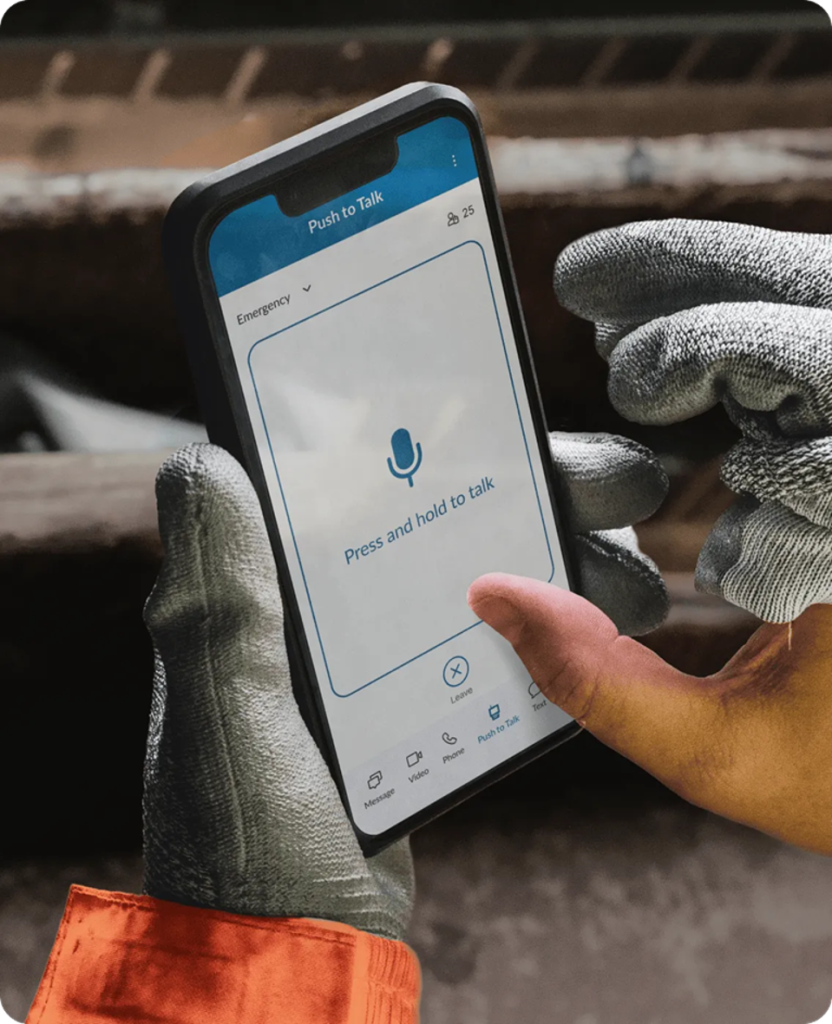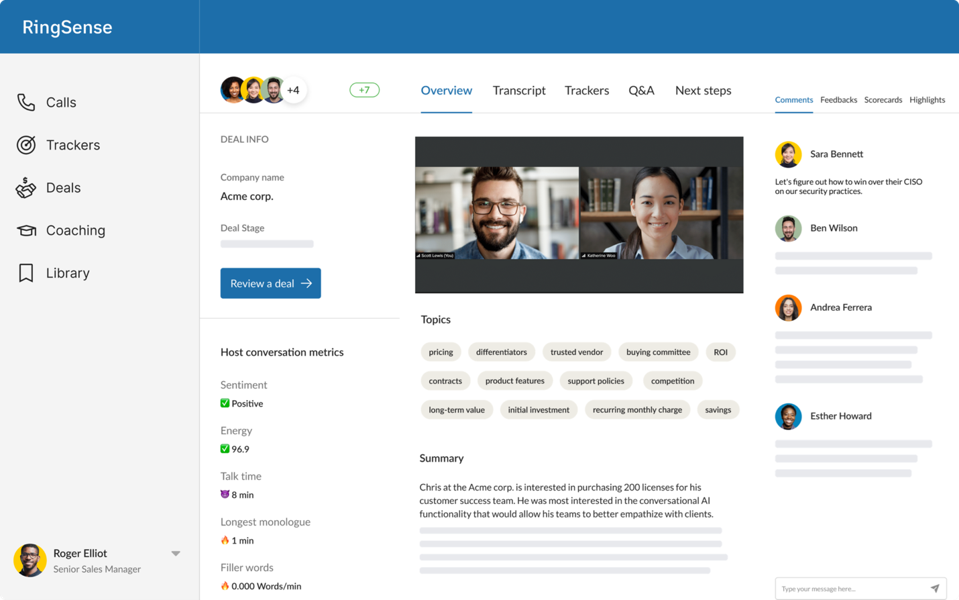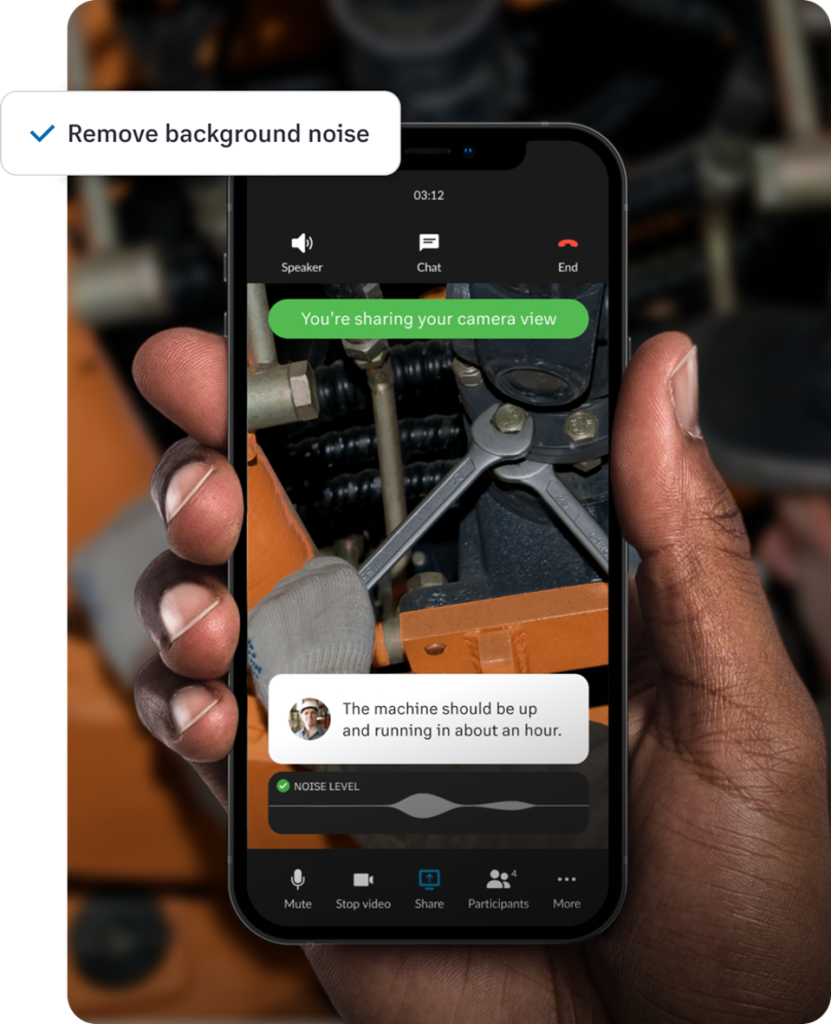
This week at Enterprise Connect, the annual enterprise communications and collaboration conference, there was a slew of new announcements that promise to change the future of work. RingCentral, a leading phone system and customer experience (CX) platform provider, is one of the companies delivering on that promise with a few innovative (and renovative) product announcements. The company announced RingSense, its planned injection of AI across its product portfolio, as well as a push-to-talk (PTT) solution for frontline workers that completely blows away PTT's typical "walkie-talkie" functionality.
I was struck by the contrast between RingCentral's two announcements at Enterprise connect. In one announcement, the company showed how it is reimagining a decades-old technology. In the other, it firmly positioned RingCentral as a formidable player in the AI-for-productivity space. Here, I'll dive into the company's announcements and how they fit into the "future of work."
The "future of work" is now—and keeps advancing
I usually take issue with the "future of work" nomenclature because many of the things that people lament about workplace change such as hybrid work, return-to-office mandates, collaboration tools and so on are already happening now—not off in the future. That’s why I like to refer to these changes as "modern work." However, in the case of generative AI, many companies' recent announcements around chat "copilots" are not quite ready for prime time. Wise companies are conducting limited betas, doing lots of testing and only gradually rolling out these products.
Even so, the “future” of AI is already happening, and it’s coming at us faster than ever. Smart AI-enhanced technology is already here, and has been for some time. Yet the fancy iterations that companies have showcased lately will not be generally available (GA) until later this year and beyond. Besides giving enterprises time to iron out the technical kinks, this timetable also permits them to deal with the implications of responsible AI, security, data privacy, product cost and potential regulation.

A Sense-able AI product rollout
RingCentral's RingSense, which it will eventually infuse throughout the company's portfolio, will initially launch as RingSense for Sales. This product does what the name implies: it uses AI to "sense" various interactions within the unstructured data of a sales team's conversations, then generate data insights that were previously unavailable. Unstructured data, which includes voice interactions from sales calls, accounts for roughly 80 % of all enterprise data.
RingSense for Sales is built into an open ecosystem and leverages RingCentral's own data as well as third-party data, such as that from CRMs like Salesforce and Zoho, to reveal hidden insights that can help sellers, sales operations pros and marketers do their jobs better. I like that RingSense doesn't discriminate against third-party data. Most companies have a mixed tech stack, and they all need to be able to make the most of any relevant data sources to glean accurate, actionable insights.
The web and mobile interfaces for RingSense for Sales enable salespeople to easily find the information they need, while sales leaders can monitor every conversation to identify any issues before they escalate. Sales leaders can use the product to prioritize where to spend their time, monitor trends and coach at scale, while revenue ops staff can review deals while conversations are still happening to reduce organizational risk. Marketing pros can identify which messages and tactics resonate with prospects and convert to more sales. They can also better understand the needs and objections of the customer to develop a more qualified pipeline.
RingSense for Sales is currently in beta, and the company has targeted this phase to existing customers with a tight feedback loop. However, it is also open to any standalone or enterprise users with no minimum signups. The company has said that it will be in GA within a few months and launch with a simple two-click integration.

RingCentral pushes PTT to new heights and levels of collaboration
Frontline workers have used PTT devices for decades, although it has often meant carrying an extra device. By contrast, RingCentral's cloud-based walkie-talkie solution can be used on employees' company-provided or own smartphones, tablets or rugged devices. At this simplest level, this means no juggling of multiple devices, which is a real convenience for the field staff who routinely use PTT. Even better, though, it can also lead to significant cost savings in a BYOD (bring your own device) pricing model. Once enabled, the "always on" PTT functionality allows workers to hear incoming messages and stay heads-up while keeping their hands free for tasks. If the environments—or individual user preference—calls for a more private experience, the PTT solution also pairs with any headset or earpiece.
RingCentral takes PTT to the next level with a slick solution that goes beyond the walkie-talkie functionality and can easily transition to voice calls, video and SMS. It can even provide AI-assisted captions for the audio, which could be incredibly useful in loud environments and to help understand accents in multi-language environments. The PTT connects frontline and desk workers so they can collaborate by sharing documents, talk and text, or switch to "see what I see" video functionality. As disparate workplaces try to stay connected and informed, I think this is a valuable asset.
Making sense of all the talk
My first reaction—sight unseen—to the PTT announcement was that the early 2000s called, and they want their telephony back. But once I got a demo at Enterprise Connect, I must admit I was highly impressed. RingCentral's announcement didn't specifically mention this, but the hands-free and caption features address key accessibility needs, which I like a lot. I think the company has managed to take something most people saw as a linear, limited-use-case device and bring it full circle into a useful collaboration tool that has the power to do more than even a smartphone. In this case, I think RingCentral has successfully brought the past into the future.
As for RingSense for Sales, I think that recording and analyzing sales calls will be a socialization challenge for some entering the era of an AI-boosted salesforce. As I addressed in a previous analysis of workplace productivity monitoring tools, employees will likely have a comfort curve as they adjust to the understanding that insights do not equal surveillance. Depending on the settings chosen by system admins, RingSense for Sales can be turned off by the user when they want to have a private conversation. I think this would be useful, as salespeople tend to build relationships with customers and should be able to keep the friendship part of the conversation out of the data if desired. As with productivity monitoring, adoption will be much easier once successes start to mount up. This could be accomplished by initially allowing employee-led data control as people get comfortable, and it would be wise for enterprises to allow this.
Ring Central will also have to address the consent issue with call recordings, which differ by state and country. (In some jurisdictions, recording is legal only with the express permission of both parties on the call.) There also must be clarity on a related issue: this is such a new space that the laws around AI transcription of conversations are not as clearly defined as they are with simple voice recording. This whole area of endeavor is still evolving, and a tight risk framework will be necessary for companies to stay compliant. RingCentral works with regulated industries such as healthcare, financial services and government, which likely makes them prepared for these inevitable changes. It also underscores the company's need to get the compliance part right.
Ringing in the new
RingCentral does a great job of understanding its customer personas and making products available to suit their needs. The company is keenly aware of the niche needs of workers—from frontline store employees to wealth managers who want to provide virtual advisory meetings. Each of these personas, and those in hundreds of other use cases, requires flexibility in product offerings.
RingCentral has answered these needs nicely with pricing incentives for all-in-one solutions as well as options for customers to adopt features à la carte. The company has also done an excellent job of bringing something from the past into both modern work and the future of work. As the "future" part rolls out, I look forward to seeing still more exciting things coming from RingCentral.























































































